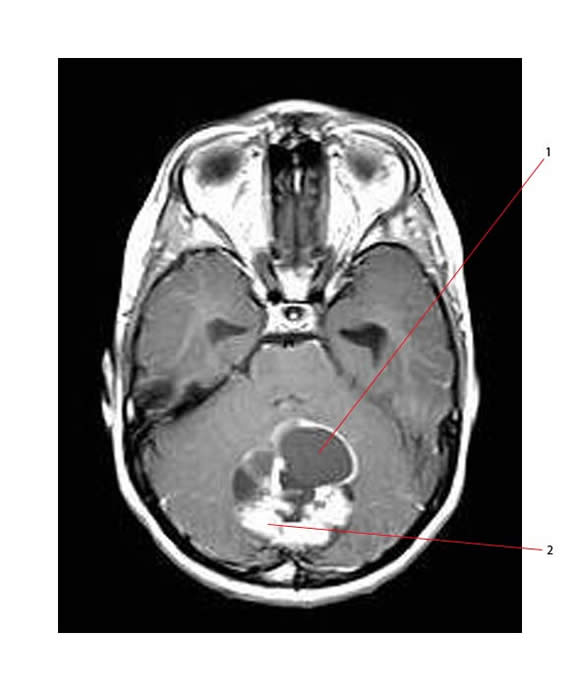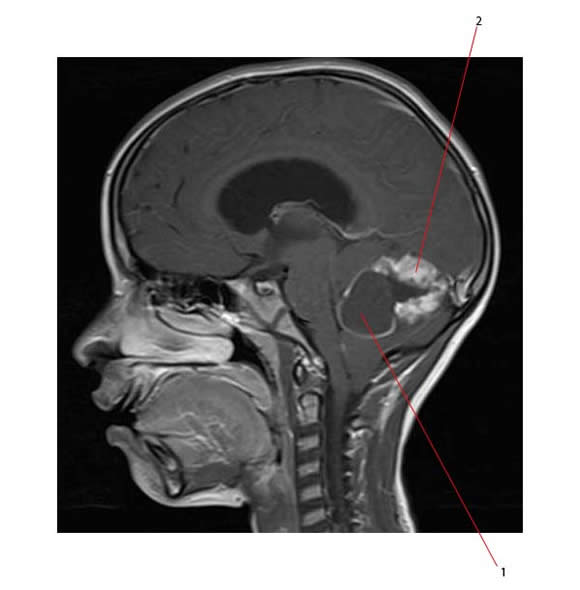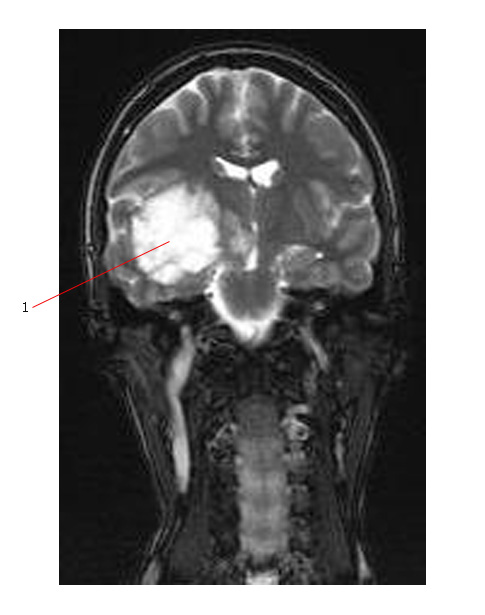Juvenile pilocytic astrocytomas (JPA)
Most common pediatric low-grade astrocytoma
- Peak incidence between 5-14 years:
- Other low grade astrocytomas tend to have an older peak incidence (between 30-40 years)
- Occur at a younger age than anaplastic astrocytomas, whose average age is 40-60 years
- 25% of all cerebellar hemispheric astrocytomas
- 60% of all optic gliomas
- Most commonly located along the midline
- Tend to develop in midline periventricular zones
- Generally:
- Discrete
- Indolent
- Associated with cyst formation
Common locations:
Infratentorial:
- Cerebellum very commonly affected (80-85% of all JPAs arise in the cerebellum)
- This site carries the most favorable prognosis
- Tends to be well-circumscribed
- Accessible for surgical resection
Supratentorial:
Supratentorial locations often involve:
- Optic pathway
- Hypothalamic area
- Thalamus
- Area around the 3rd ventricles
- Tumors in the cerebral hemispheres tend to be located in medial temporal lobe.
The image below is an axial MR (post-gad T1) of a posterior fossa pilocytic astrocytoma. #1 points to the anterior cystic component and #2 points to the enhancing, solid posterior component.

Here is a sagittal veiw of the same tumor:

Below is a MR scan (coronal section) which shows a T2 hyperintense mass in the right temporal lobe (#1). This is a pilocytic astrocytoma.


